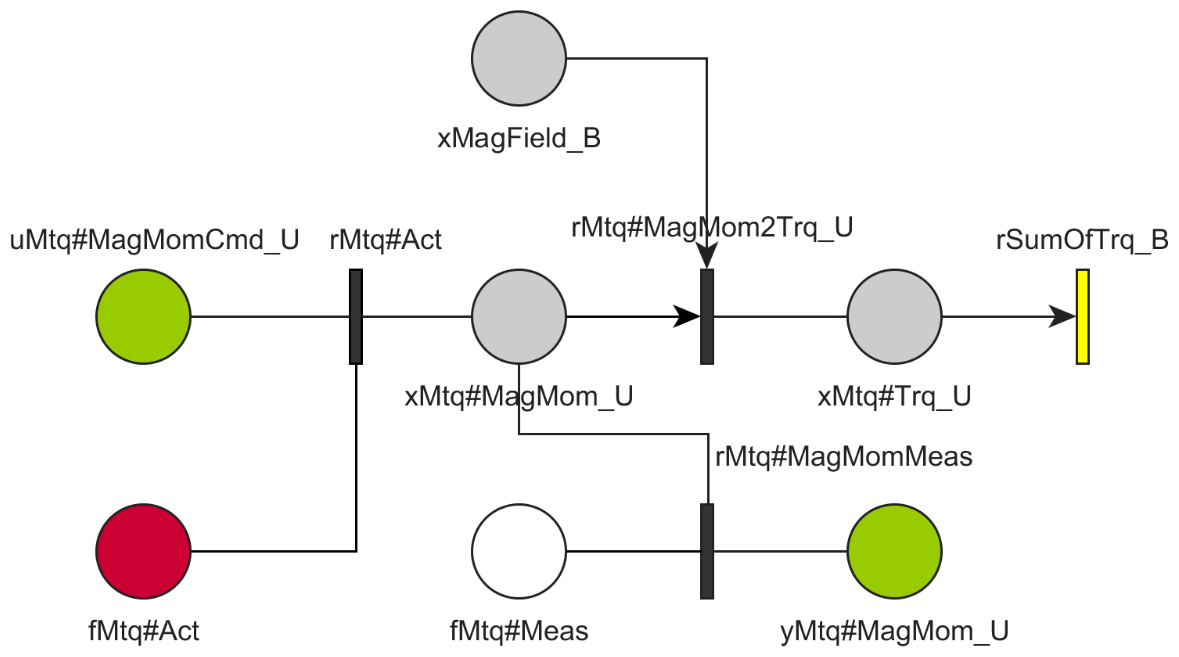GAFE Structural Analysis
The GAFE Structural Analysis is a tool that is based on the mathematical method called "structural analysis". In the context AOCS/GNC FDIR design this method can be used to model the sensors, actuators, physical constraints and possible faults of a spacecraft as a set of relations between known and unknown states. This set can then be used to analyse detectability and isolability of the modelled faults.
Expressed more practical, the GAFE Structural Analysis tool assists the user in applying the GAFE Methodology in the following tasks:
-
Extension of Nominal Equipment Set: the goal of this task is to make the nominal equipment set (no redundancies) compliant with the required
fault diagnosis capabilities (i.e. detection and potentially isolation for all considered faults) and the requested failure tolerance requirement
(failure recovery) for all AOCS/GNC modes.
In general this task consists of adding or activating additional AOCS/GNC units and/or analytic redundancy relations. -
Definition & Implementation of FDIR Concept: assisted by the tool are the determination of the fault detectability and isolability information,
the proposal of residual structures to be used and the generation of the corresponding fault signatures.
Acknowledgement: The GAFE Structural Analysis tool makes use of the Fault Diagnosis Toolbox developed by Erik Frisk and Mattias Krysander from Linköping University, Sweden.



